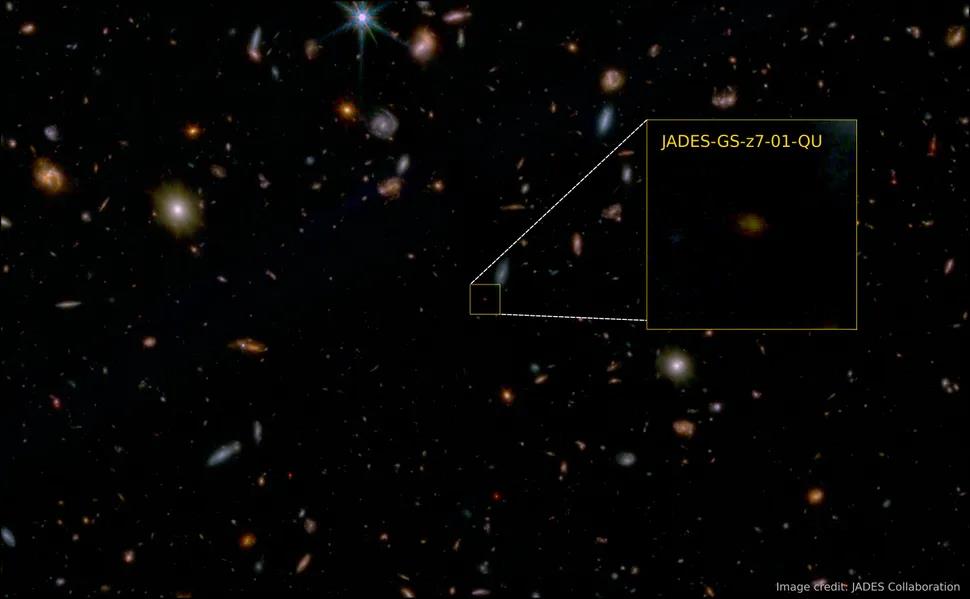Mysterious Object from 13.1 Billion Years Ago Challenges Our Understanding of the Universe
In a fascinating discovery made by the James Webb Space Telescope, an image of the universe from 13.1 billion years ago reveals the existence of a perplexing entity known as JADES-GS-z7-01-QU. This celestial object baffles scientists as it appears to be a galaxy that has completed its life cycle at a time when other galaxies in the young universe were just beginning to take shape.

With its unparalleled ability to capture images from billions of light years away, the James Webb telescope provides a unique glimpse into the past. Due to the time it takes for light to travel to Earth, the image of JADES-GS-z7-01-QU captured by the telescope actually represents its appearance 13.1 billion years ago.
It is possible that this deceased galaxy has since merged with smaller entities or drifted far beyond our observational capabilities due to the expansion of the universe. The discovery of JADES-GS-z7-01-QU not only offers a glimpse into the early universe but also challenges current theories of cosmology.
A study published in the scientific journal Nature by Tobias Looser, a researcher from the University of Cambridge, and his colleagues, suggests that galaxies require a rich supply of gas to form stars, and the early universe was like a grand cosmic feast. Therefore, the premature death of JADES-GS-z7-01-QU during this phase seems illogical.
Furthermore, existing models fail to explain why this galaxy formed and died within the first 700 million years of the universe’s existence, considering our own universe is currently 13.8 billion years old. “Everything seems to happen faster and more dramatically in the early universe,” says Looser.
In a deeper analysis, scientists partially explain the rapid birth and demise of JADES-GS-z7-01-QU. It is believed that the galaxy experienced an intense burst of star formation within a span of 30-90 million years before abruptly ceasing. However, the trigger for this sudden halt remains unknown. One hypothesis suggests an internal disruption caused by radiation from an unexpectedly powerful “monster” black hole, which expelled gas from the galaxy and deprived it of the necessary ingredients for star formation.
Another intriguing possibility is that the environment surrounding the galaxy during the early stages of the universe’s formation did not provide enough gas to satisfy its star-forming appetite, leading to its premature demise.
Nevertheless, these scenarios remain speculative, and further exploration is needed to uncover more enigmatic objects like JADES-GS-z7-01-QU in the early universe. Undoubtedly, these discoveries will prompt a reevaluation of fundamental theories regarding the evolution of the cosmos.
To stay updated on the latest discoveries in the field of finance and economics, visit Business Today.
